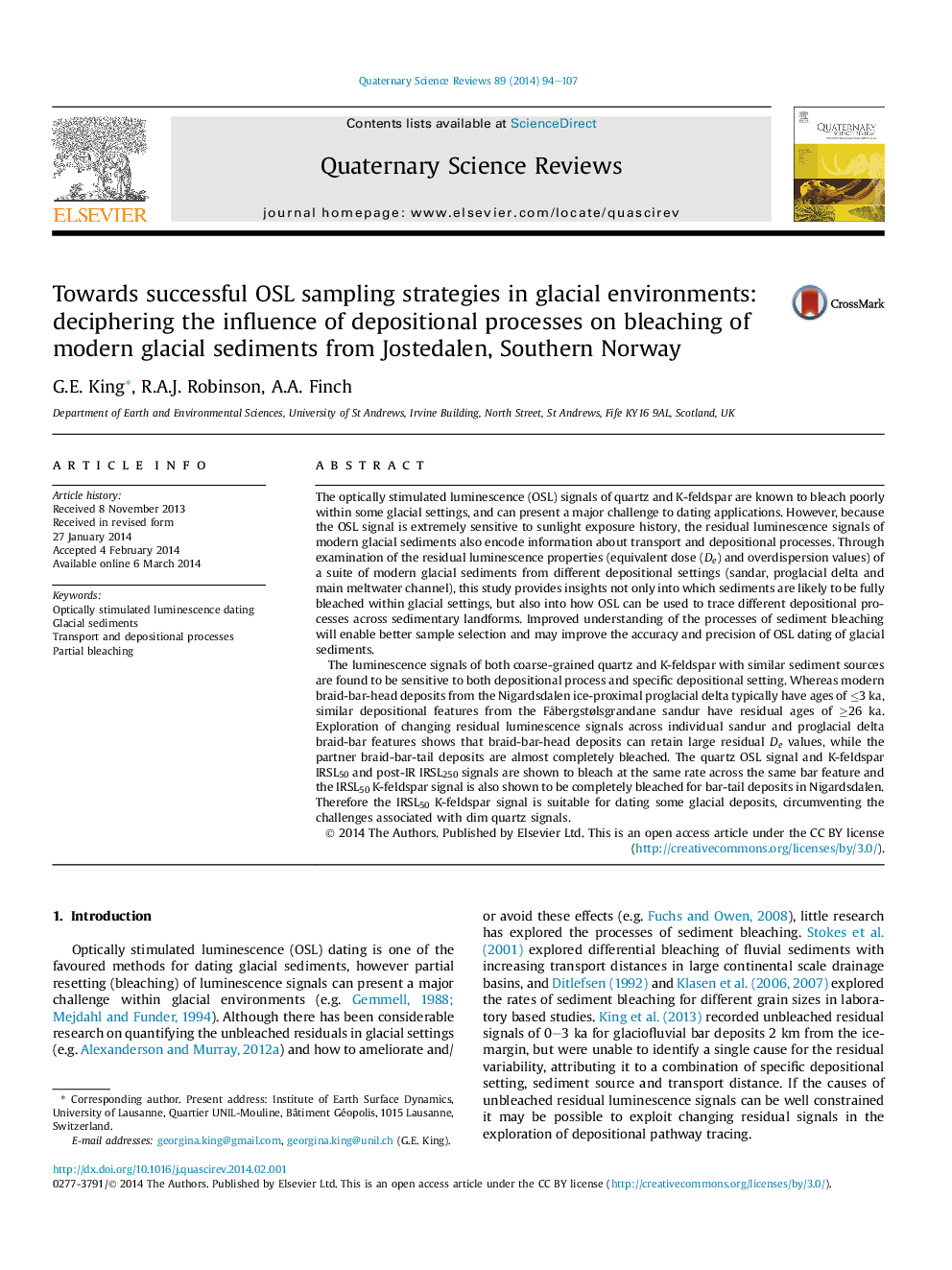| Article ID | Journal | Published Year | Pages | File Type |
|---|---|---|---|---|
| 6446424 | Quaternary Science Reviews | 2014 | 14 Pages |
Abstract
The luminescence signals of both coarse-grained quartz and K-feldspar with similar sediment sources are found to be sensitive to both depositional process and specific depositional setting. Whereas modern braid-bar-head deposits from the Nigardsdalen ice-proximal proglacial delta typically have ages of â¤3 ka, similar depositional features from the FÃ¥bergstølsgrandane sandur have residual ages of â¥26 ka. Exploration of changing residual luminescence signals across individual sandur and proglacial delta braid-bar features shows that braid-bar-head deposits can retain large residual De values, while the partner braid-bar-tail deposits are almost completely bleached. The quartz OSL signal and K-feldspar IRSL50 and post-IR IRSL250 signals are shown to bleach at the same rate across the same bar feature and the IRSL50 K-feldspar signal is also shown to be completely bleached for bar-tail deposits in Nigardsdalen. Therefore the IRSL50 K-feldspar signal is suitable for dating some glacial deposits, circumventing the challenges associated with dim quartz signals.
Related Topics
Physical Sciences and Engineering
Earth and Planetary Sciences
Geology
Authors
G.E. King, R.A.J. Robinson, A.A. Finch,
